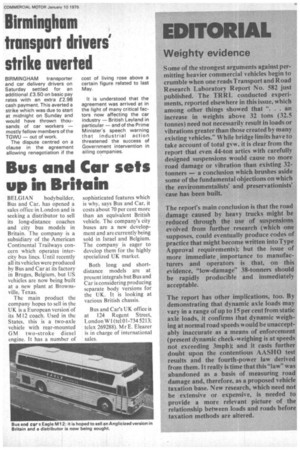EDITORIAL
Page 17

If you've noticed an error in this article please click here to report it so we can fix it.
Weighty evidence
Some of the strongest arguments against permatting heavier commercial vehicles begin to crumble when one reads Transport and Road Research Laboratory Report No. 582 just published. The TRR1_, conducted experiments, reported elsewhere in this issue, which among other things showed that ". . . an increase in weights above 32 tons (32.5 tonnes) need not necessarily result in loads or vibrations greater than those created by many existing vehicles." While bridge limits have to take account of total gvw, it is clear from the report that even 44-ton artics with carefully designed suspensions would cause no more road damage or vibration than existing 32tormers — a conclusion which brushes aside some of the fundamental objections on which the environmentalists' and preservationists case has been built.
The report's main conclusion is that the road damage caused by heavy trucks might be reduced through the use of suspensions evolved from further research (which one supposes, could eventually produce codes of practice that might become written into Type Approval requirements); hut the issue of more immediate importance to manufacturers and operators is that. on this evidence, "low-damage" 38-tormers should be rapidly producible and immediately acceptable.
The report has other implications, too. By demonstrating that dynamic axle loads may vary in a range of up to 15 per cent from static axle loads, it confirms that dynamic weighing at normal road speeds would be unacceptably inaccurate as a means of enforcement (present dynamic check -weighing is at speeds not exceeding 3mph); and it casts further doubt upon the contentious A2XSTI() test results and the fourth-power law derived from them. It really is time that this "law" was abandoned as a basis of measuring road damage and, therefore, as a proposed vehicle taxation base. New research, which need not he extensive or expensive, is needed to provide a more relevant picture of the relationship between loads and roads before taxation methods are altered.




































































































